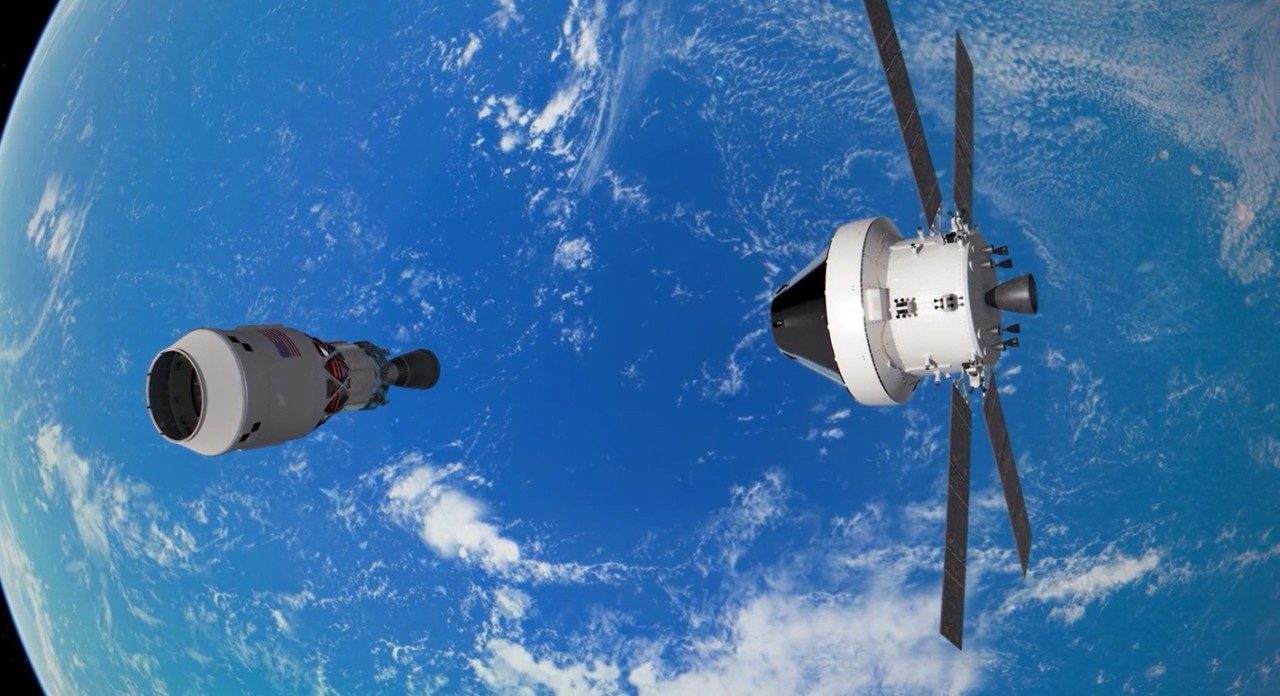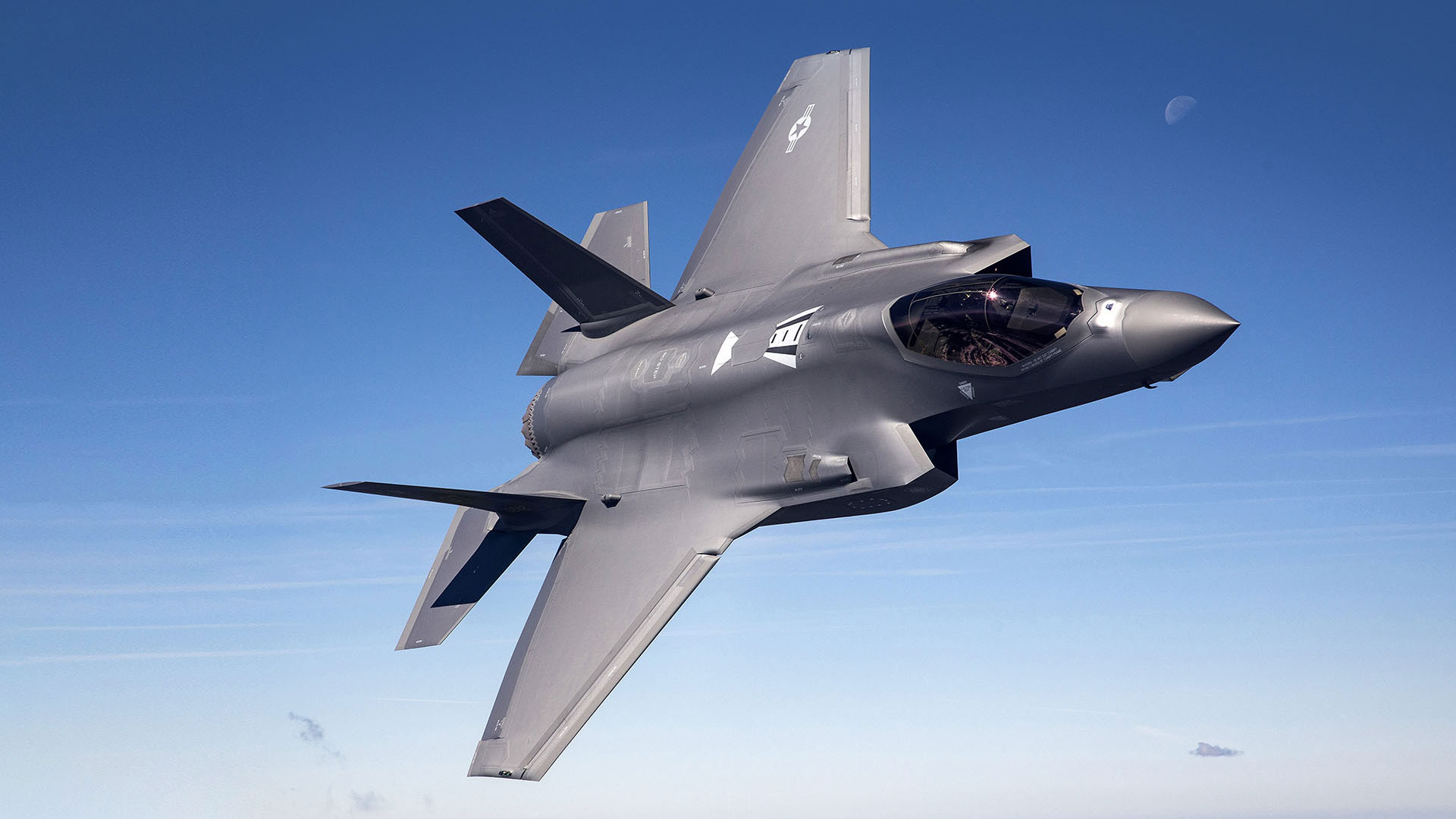Docking Orion: Choreographing a Space Dance
The Artemis campaign has a variety of spacecraft and systems uniquely developed to perform specifics roles and missions including its cornerstone, Orion -- the only spacecraft capable of taking humans from Earth to lunar orbit.
What makes Orion so unique is its design, which allows it to seamlessly maneuver and perform safe and precise docking with different types of spacecraft, like SpaceX’s Starship human landing system, NASA’s Gateway lunar space station, or even other vehicles if needed such as habitats and propulsion systems. This capability is crucial for enabling the transportation of crew and cargo between different spacecraft, as well as for facilitating the assembly and servicing of spacecraft in deep space.
“Docking is like a choreographed dance of timing to make everything work,” said Harvey Mamich, Orion guidance navigation and control manager at Lockheed Martin. “If Orion or the other vehicle drifts from its position, Orion has to readjust based on a variety of information, figure out where both vehicles are, and conduct thruster burns to get back in the right spot. Everything must work together seamlessly and autonomously.”
The activity of a spacecraft approaching, interacting and connecting to another spacecraft is known as Rendezvous, Proximity Operations and Docking, or RPOD, and Lockheed Martin is working with NASA to develop and test the latest RPOD generation for Orion.
Ever Wonder How to Dock a Spacecraft?
RPOD systems, like the one on Orion, are used on an array of spacecraft and use a combination of sensors, cameras, and computers to guide the vehicle into the correct docking position. These software and hardware components work together to provide real-time data on the spacecraft's position, velocity and attitude.
To achieve precise and accurate docking, Orion’s RPOD systems utilize Light Detection and Ranging (LiDAR) technology, which generates high-resolution maps of the docking environment. This enables the system to navigate the spacecraft with greater precision and accuracy.
LiDAR provides the position information of the target vehicle, such as HLS, and as Orion goes through the entire docking procedure from a far distance out down to the two vehicles touching, LiDAR tells Orion’s navigation exactly where the other spacecraft is and then it makes automatic corrections to ensure those two spacecraft are docked perfectly.
In contrast to earlier docking systems, which relied on manual operation with limited automation, Orion's RPOD system utilizes LiDAR targeting retroreflectors to enable automated docking with a high degree of precision. The system also provides an option for manual override by crew members if necessary, ensuring a safe and reliable docking process.
“The Orion docking system is an automated process that will be controlled by the LiDARs and the software resident in our systems that drive the actual thrusters,” said Keith Barr, Orion RPOD field test lead at Lockheed Martin. “The astronauts are of course very interested in what’s going on. This is a very dangerous operation so they’re paying very close attention, and they could take over if needed.”
Testing Using Drones and Robots
Testing and simulation of Orion's RPOD system were recently conducted at Lockheed Martin’s Space Operations Simulation Center (SOSC) in Denver – a world class testing facility where engineers can replicate the operational conditions of space – as well as at large open-field ranges at Lockheed Martin’s Santa Cruz, California facility.
Engineers at Lockheed Martin plan for the different scenarios that Orion and the Artemis crew will encounter during a variety of missions, then use these facilities to put the RPOD system through a rigorous test regiment.
For one test, conducted at the Santa Cruz facility, custom-built drones outfitted with 3D-printed parts simulated the separation distance of multiple target reflectors – think moving targets at a shooting range – near a docking port. Orion’s RPOD LiDAR system was deployed in a fixed trailer on the coast, tracking the motion of the moving drones out over the Pacific Ocean.
The drones were flown in a variety of approach paths toward the trailer, ranging from 10 meters to further than one kilometer, at varying speeds and angles – similar to how Orion would approach another spacecraft. This enabled the team to simulate rendezvous approach tracking, holds, and unexpected conditions.
The second part of the RPOD testing incorporated the cameras and was performed at the SOSC utilizing its large 50-foot-tall robot running along a 180-foot-long track. These tests were designed to fine tune the limits of the system's performance and to evaluate its ability to maintain accuracy at close range, down to centimeters in distance. The LiDAR's field of view is typically narrower at close range, which makes it more sensitive to misalignment.
“Docking is one of the most dangerous things you can do in space,” said Barr. “We develop these scenarios and conduct these tests to make sure we can do that as safely as possible with crew on-board.”

Credit: NASA
What’s Next for Orion?
During the Artemis II mission next year, astronauts will do a key proximity operations demonstration. Following the separation from the Space Launch System upper stage, Orion will turn around and the crew will pilot the spacecraft to within approximately 30 feet of the upper stage, focusing on a docking target on the side. The proximity test will give the crew and ground team great insight into how Orion performs prior to future full-up docking missions.
Orion is poised to undertake a series of critical missions in support of NASA's Artemis program. The spacecraft is scheduled to play a key role in the Artemis III mission, slated for launch in 2027, which will mark the first crewed lunar landing since the Apollo era.
With the Moon in its sights and Mars in the near future, Orion, carrying humans and docking with a variety of vehicles, will be a critical element of NASA’s Moon to Mars efforts.




